Abstract
The natural habitat of Paracoccidioides brasiliensis, the aetiologic agent of paracoccidioidomycosis, has not been determined. Consequently, the events leading to the acquisition of infection remain controversial. To identify factors associated with infection in endemic areas we conducted a survey in three rural communities in Colombia where we had previously diagnosed paracoccidioidomycosis in children. Permanent residents were surveyed taking into consideration environmental and occupational variables. Skin tests were used to classify subjects as infected or non-infected. Variables found associated with infection were: (i) community A: previous residence around Porce river and agriculture in vegetable gardens; (ii) community C: frequent use of specific water sources; (iii) community V: housekeeping activities, and (iv) total group: age > 25 years and contact with bats. Residents in communities with higher prevalence of infection were older, had more complex residence history, and referred more contact with armadillos than residents of communities with lower infection.
Full text
PDF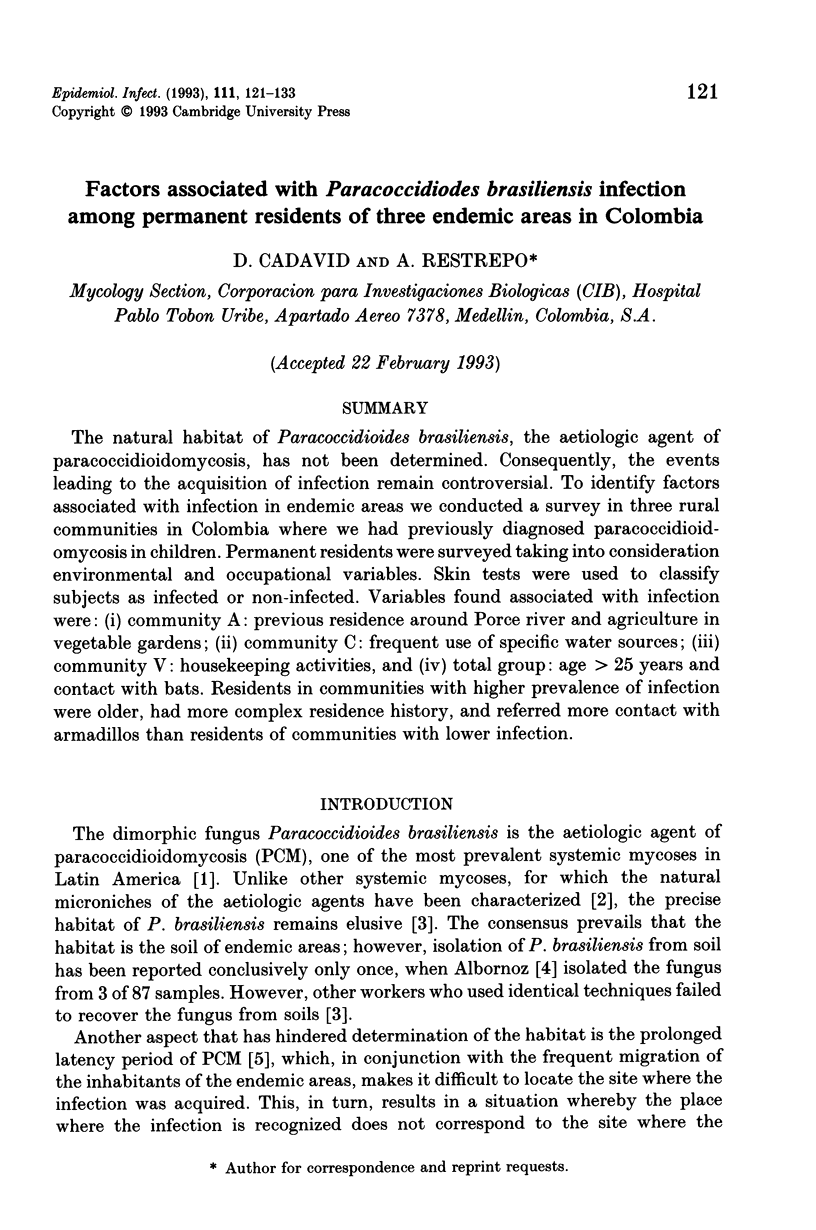
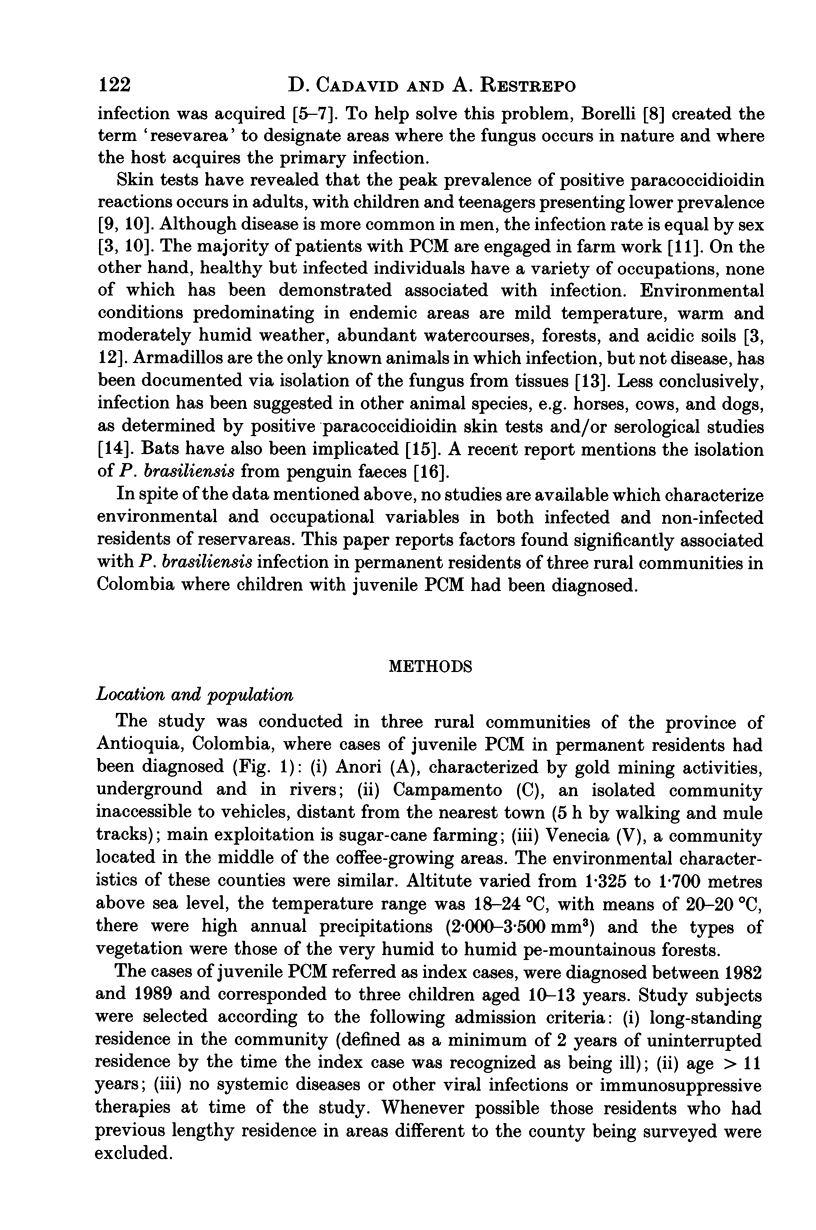
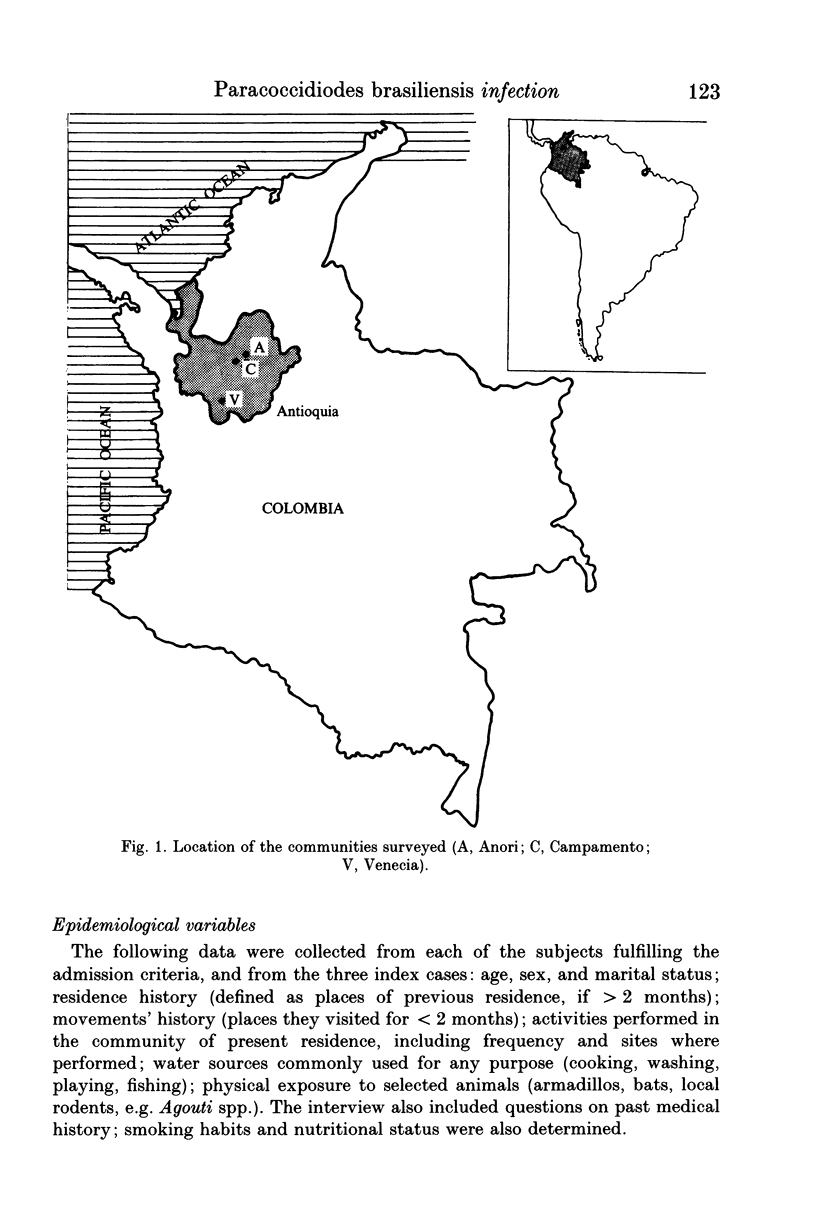
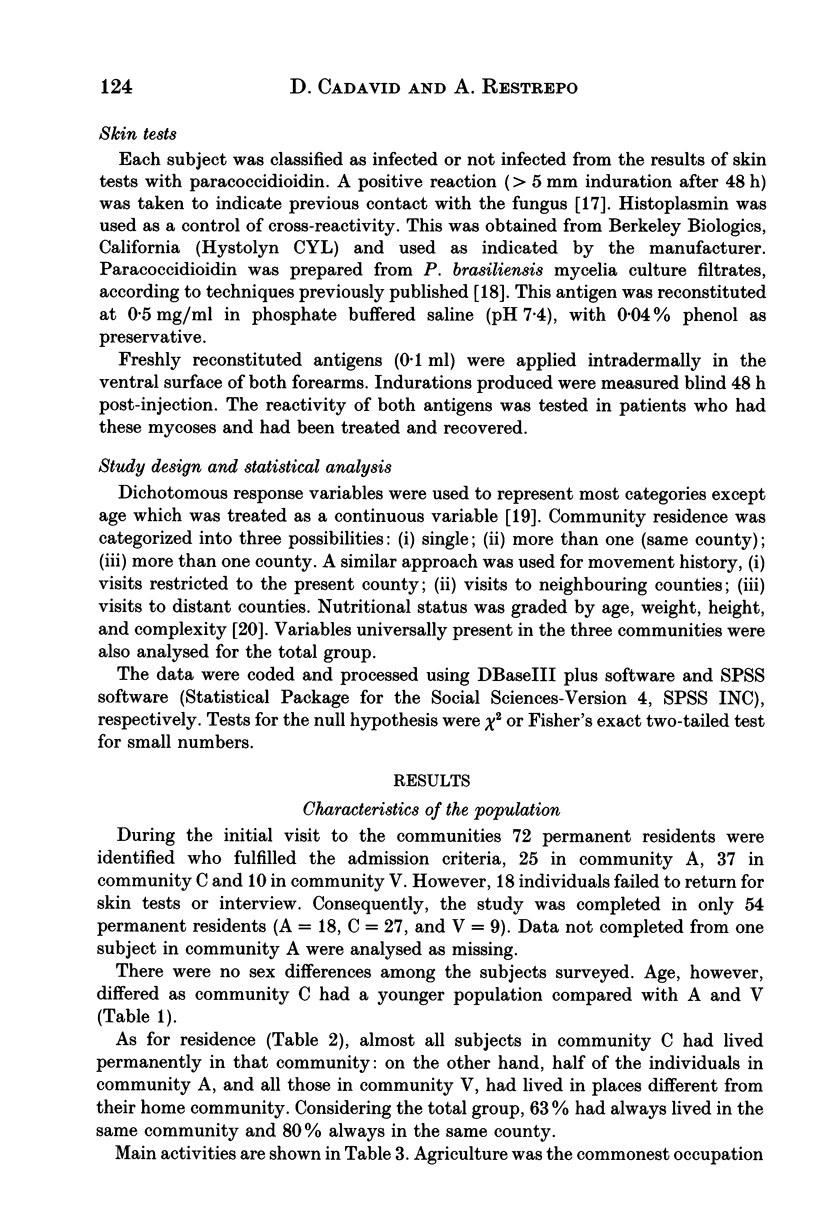
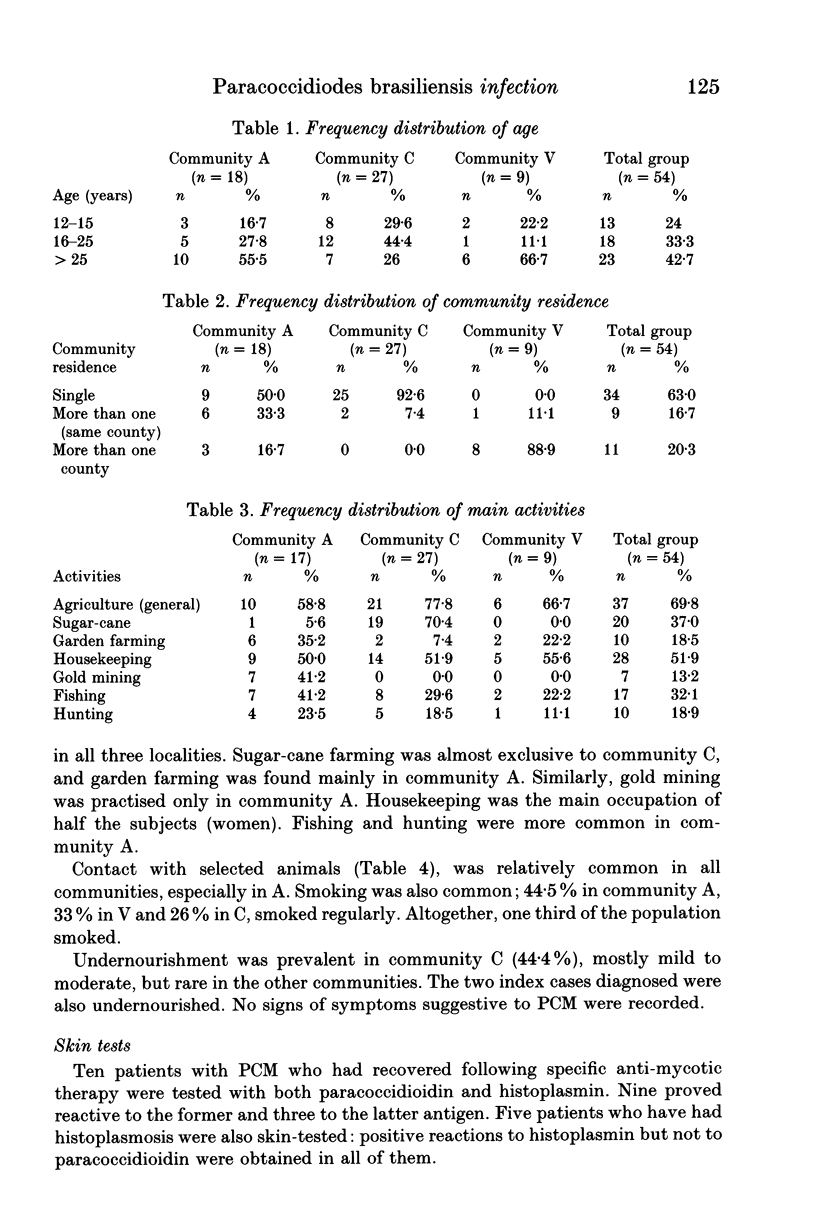
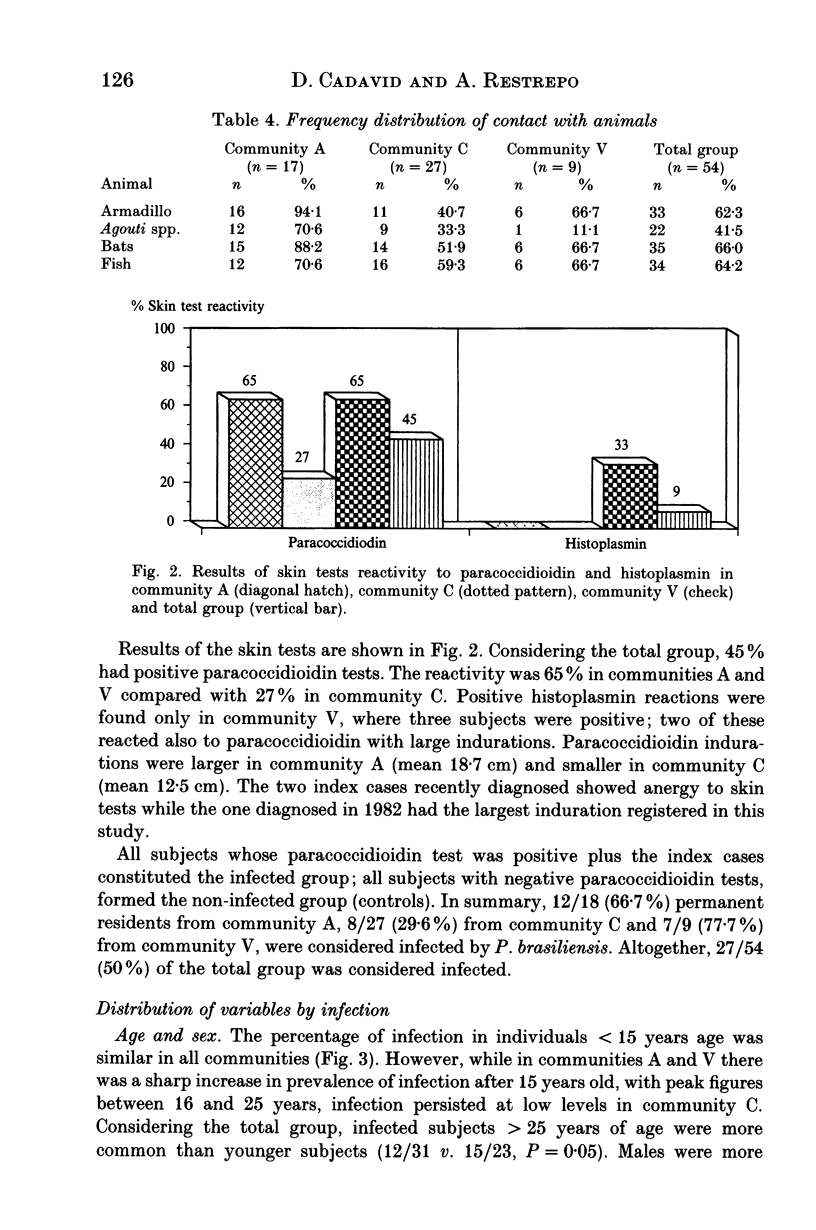
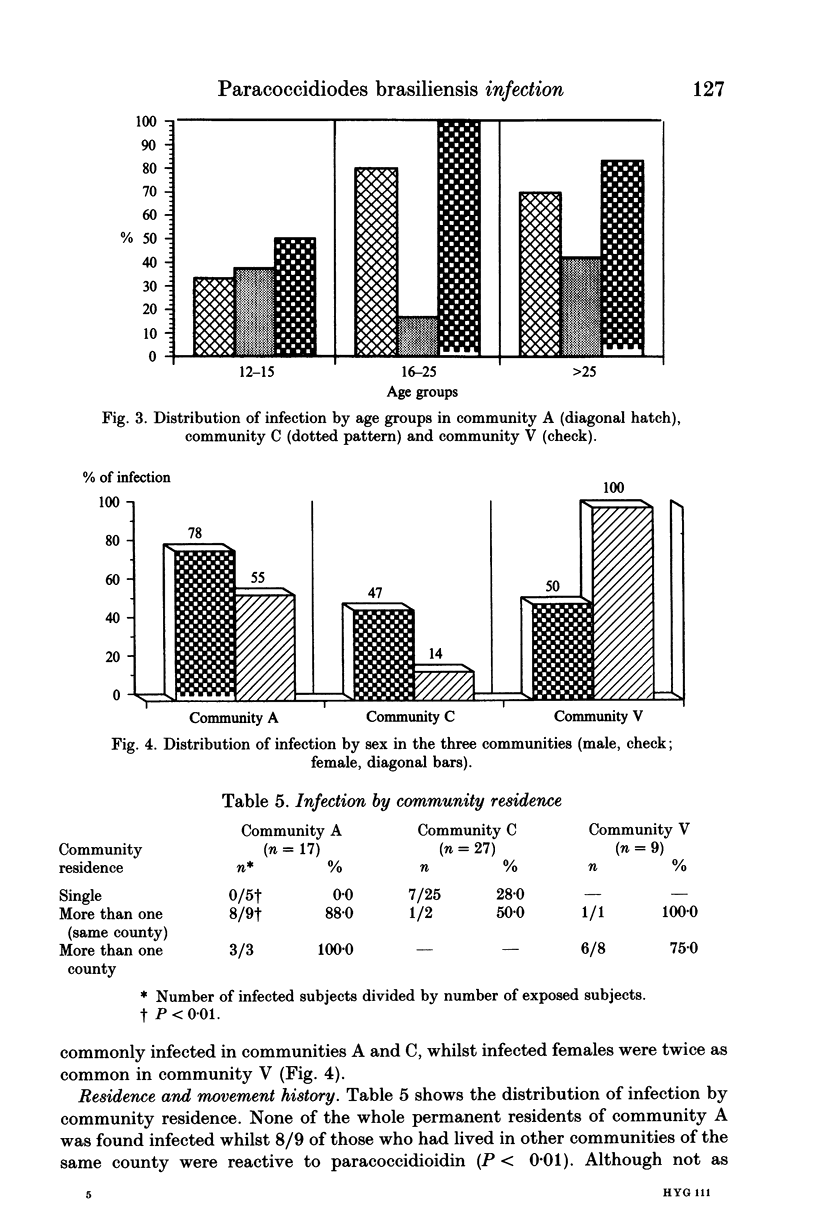
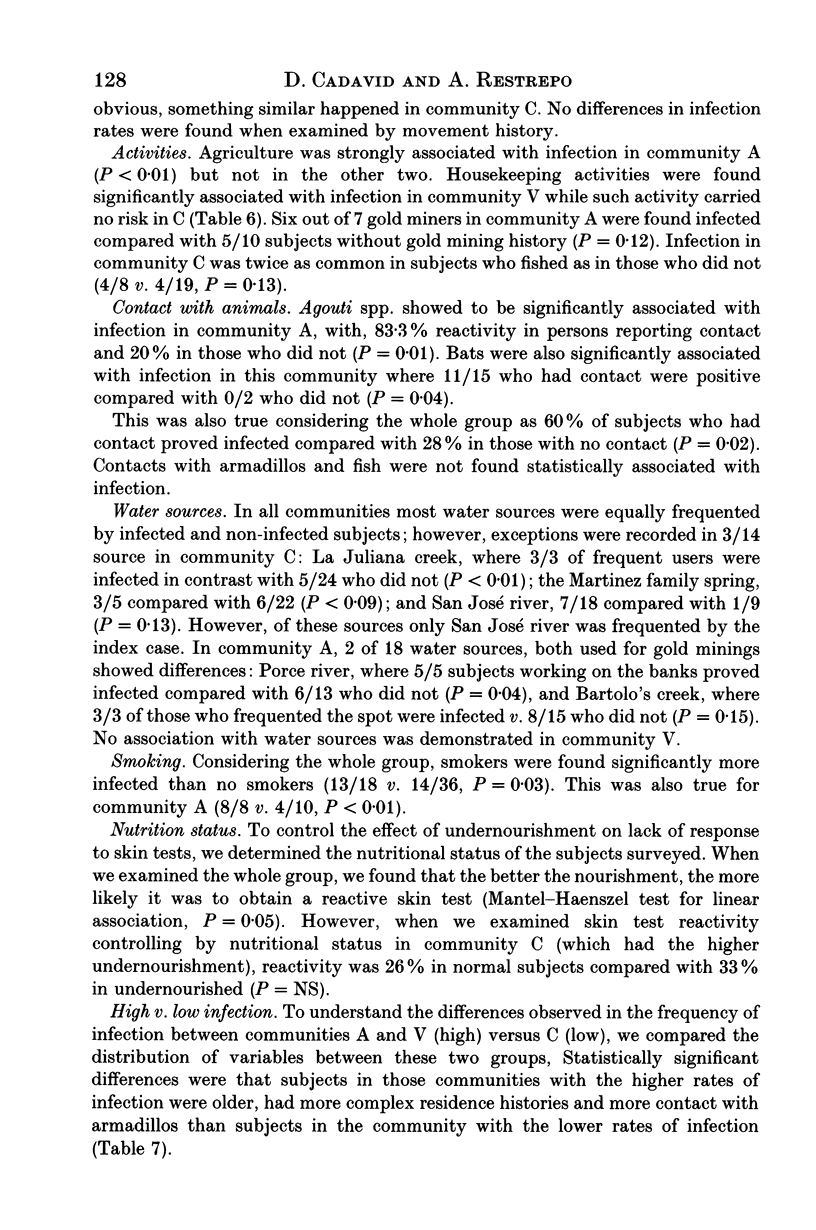
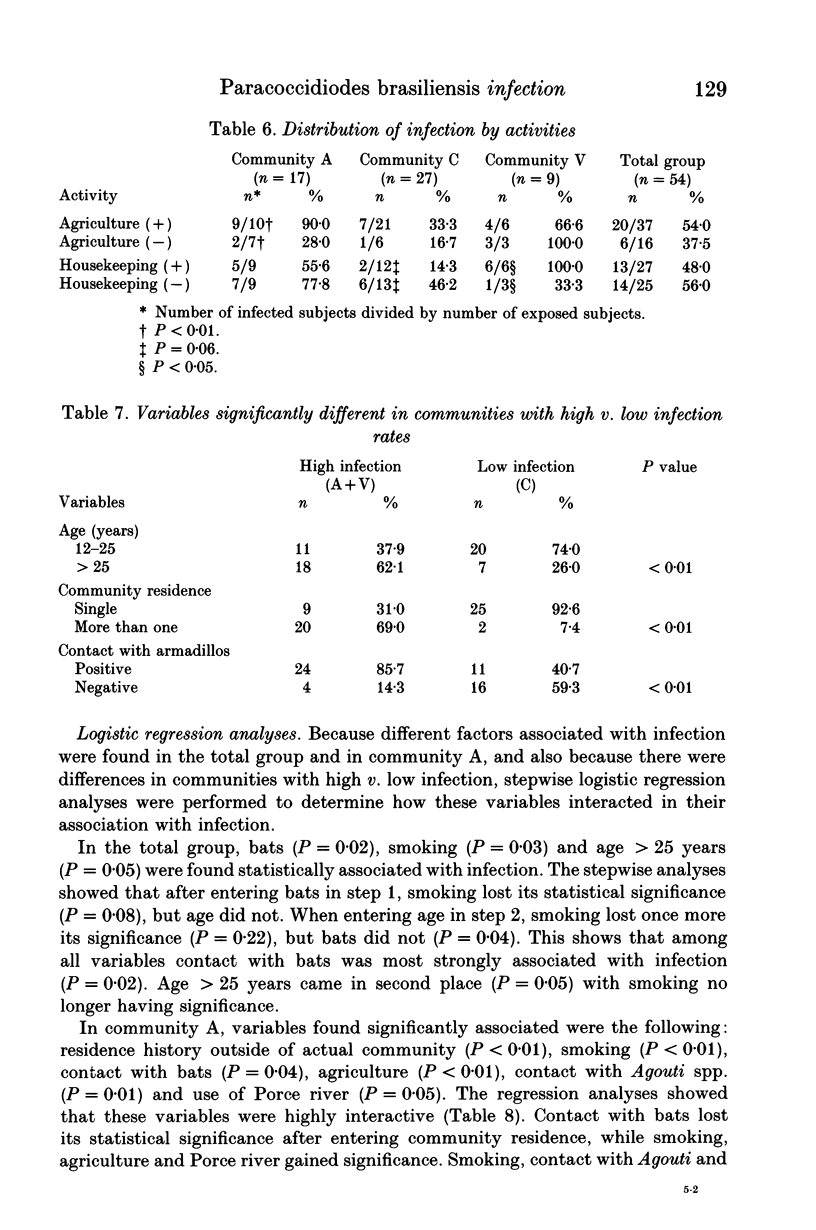
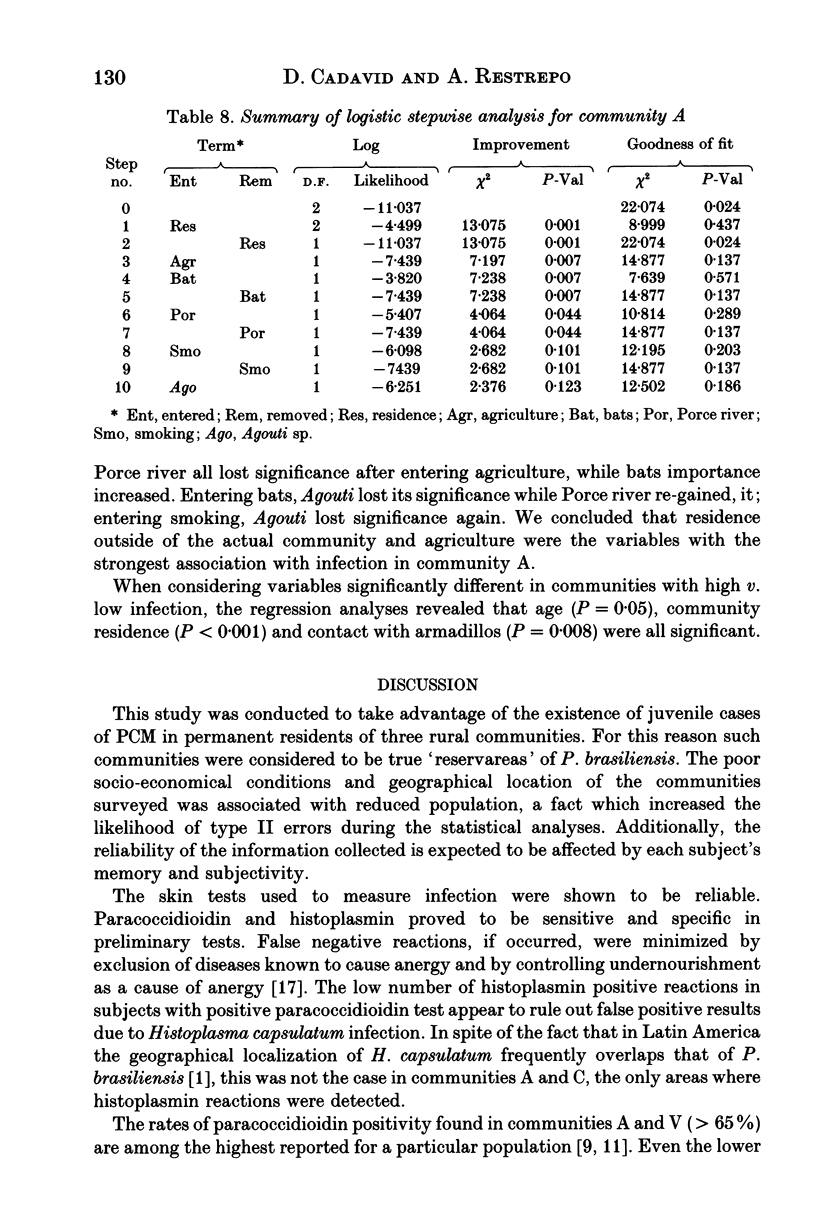

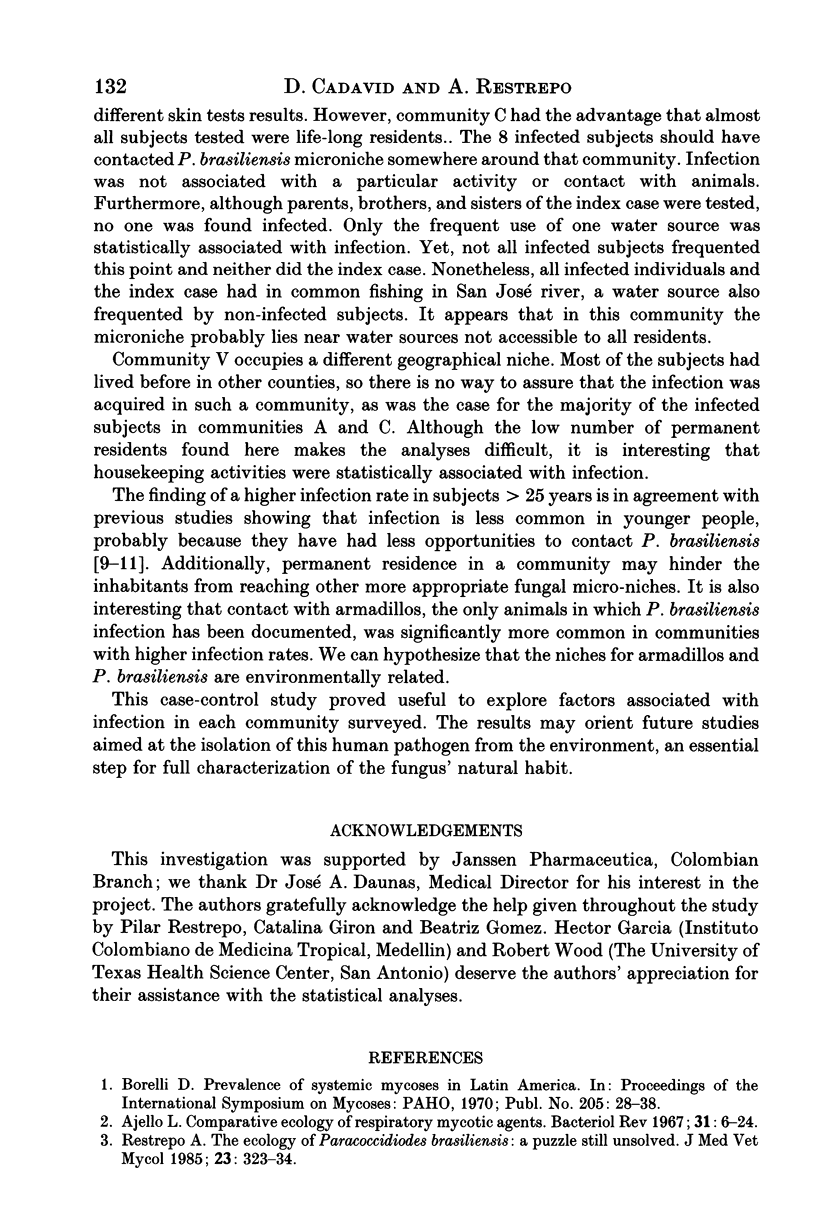
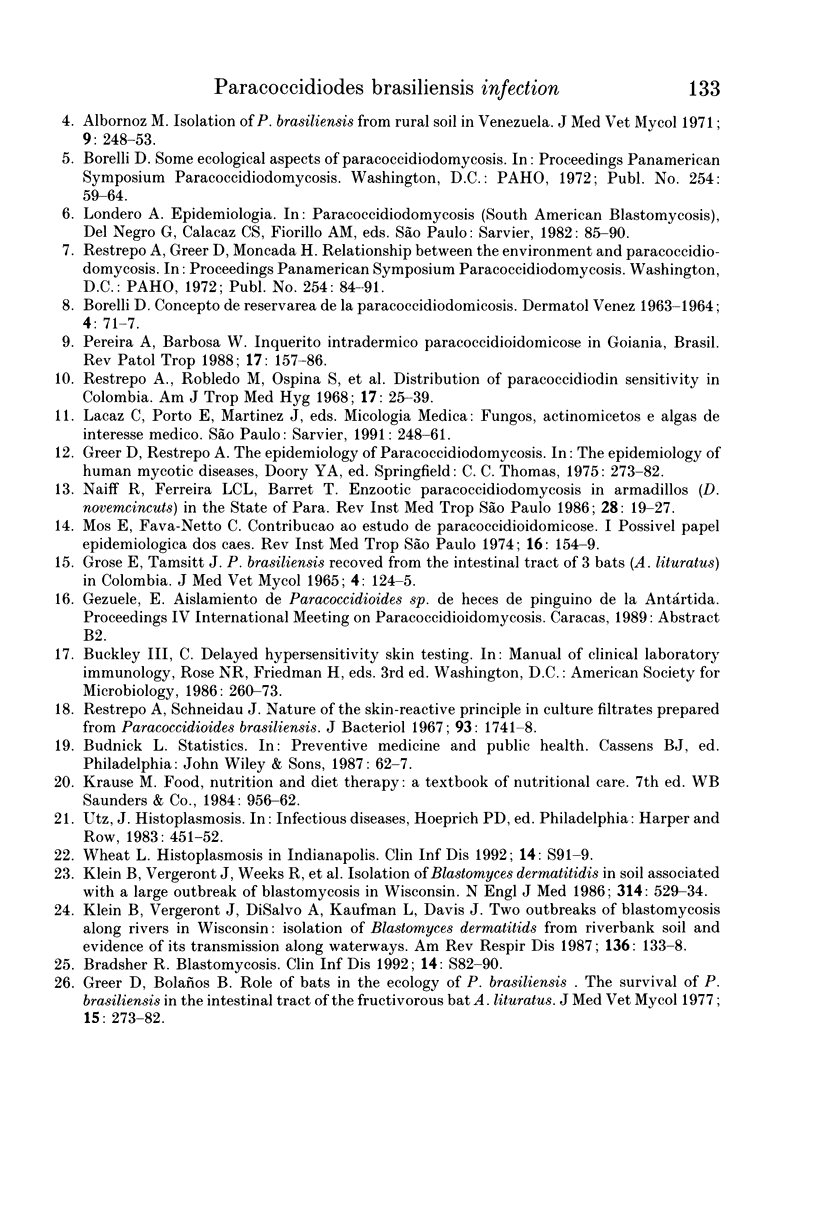
Selected References
These references are in PubMed. This may not be the complete list of references from this article.
- Ajello L. Comparative ecology of respiratory mycotic disease agents. Bacteriol Rev. 1967 Mar;31(1):6–24. doi: 10.1128/br.31.1.6-24.1967. [DOI] [PMC free article] [PubMed] [Google Scholar]
- Bradsher R. W. Blastomycosis. Clin Infect Dis. 1992 Mar;14 (Suppl 1):S82–S90. doi: 10.1093/clinids/14.supplement_1.s82. [DOI] [PubMed] [Google Scholar]
- De Albornoz M. B. Isolation of Paracoccidioides brasiliensis from rural soil in Venezuela. Sabouraudia. 1971 Nov;9(3):248–253. [PubMed] [Google Scholar]
- Grose E., Tamsitt J. R. Paracoccidioides brasiliensis recovered from the intestinal tract of three bats (Artibeus lituratus) in Colombia, S.A. Sabouraudia. 1965 Jun;4(2):124–125. doi: 10.1080/00362176685190281. [DOI] [PubMed] [Google Scholar]
- Klein B. S., Vergeront J. M., Weeks R. J., Kumar U. N., Mathai G., Varkey B., Kaufman L., Bradsher R. W., Stoebig J. F., Davis J. P. Isolation of Blastomyces dermatitidis in soil associated with a large outbreak of blastomycosis in Wisconsin. N Engl J Med. 1986 Feb 27;314(9):529–534. doi: 10.1056/NEJM198602273140901. [DOI] [PubMed] [Google Scholar]
- Mós E. do N., Netto C. F. Contribuicão ao estudo da paracoccidioidomicose. I. Possível papel epidemiológico dos cães. Estudo sorológico e anátomo-patológico. Rev Inst Med Trop Sao Paulo. 1974 May-Jun;16(3):154–159. [PubMed] [Google Scholar]
- Naiff R. D., Ferreira L. C., Barrett T. V., Naiff M. F., Arias J. R. Paracoccidioidomicose enzoótica em tatus (Dasypus novemcinctus) no estado do Pará. Rev Inst Med Trop Sao Paulo. 1986 Jan-Feb;28(1):19–27. doi: 10.1590/s0036-46651986000100005. [DOI] [PubMed] [Google Scholar]
- Restrepo-Moreno A., Schneidau J. D., Jr Nature of the skin-reactive principle in culture filtrates prepared from Paracoccidioides brasiliensis. J Bacteriol. 1967 Jun;93(6):1741–1748. doi: 10.1128/jb.93.6.1741-1748.1967. [DOI] [PMC free article] [PubMed] [Google Scholar]
- Restrepo A. The ecology of Paracoccidioides brasiliensis: a puzzle still unsolved. Sabouraudia. 1985 Oct;23(5):323–334. [PubMed] [Google Scholar]
- Wheat L. J. Histoplasmosis in Indianapolis. Clin Infect Dis. 1992 Mar;14 (Suppl 1):S91–S99. doi: 10.1093/clinids/14.supplement_1.s91. [DOI] [PubMed] [Google Scholar]


